
If you had a choice between building new homes that meet basic standards and building comfortable, healthy homes that dramatically cut energy bills, which would you prefer? How about if the low-energy homes cost the same (or nearly the same) as a standard home to build? If the cost is relatively equal, shouldn’t every new home be built this way?
A recent Rocky Mountain Institute report, The Economics of Zero-Energy Homes: Single-Family Insights, makes the case that not only is this vision becoming achievable, in some locations in the United States the economics are in place today to make cost parity (almost) a reality. And in one New England location — thanks to progressive incentives and energy codes — it is a reality.
In our report, we analyzed four cities — Houston, Atlanta, Baltimore, and Chicago — to determine the current incremental cost to build a zero-energy (ZE) or zero-energy ready (ZER) home in Climate Zones 2 through 5 (where 90% of new construction homes are built) to determine the most cost-optimal energy upgrade package.
ZE homes produce or procure as much renewable energy as they consume over the course of a year. ZER homes are designed to achieve ZE levels of efficiency but don’t yet have photovoltaics. We found that the cost increase to build a ZE or ZER home is modest in all four zones, with incremental costs averaging 7.3% for ZE homes and 1.8% for ZER homes — far less than consumers, builders, and policymakers may realize.
To scale the results of our four-city analysis across the country, we used R.S. Means to adjust the labor and material costs, PVWatts to adjust the solar resource, EnergySage to adjust the solar cost, and the Pacific Northwest National Laboratory’s analysis of the International Energy Conservation Code (IECC) to adjust incremental costs in relation to local energy codes. We did not factor in local incentives.
Using this approach, we approximated the incremental cost in the 47 most populous U.S. cities (see the table below). At a 1.1% incremental cost, many cities on this list may have incentives available that could result in cost parity for ZER homes. This is exciting because ZER homes can be built anywhere regardless of solar resource and roof design, and so are incredibly scalable.
The importance of codes and incentives
Our research uncovered a basic truth: Not all cities are created equal in terms of the cost to build ZE and ZER homes. Even the exact same home with the exact same energy upgrade package can result in significantly different costs in a different city.
Why?
Robust local building energy codes (like IECC 2015), better solar resources, lower labor and material costs, and comprehensive incentives all make it easier to build ZE and ZER homes at a lower cost. Therefore, cities with these features get closer to ZE/ZER cost parity, and those without are farther from parity.
For example, Chicago has a stronger building energy code than the modeled baseline (IECC 2015 versus 2009, respectively). ComEd, the utility that serves Chicago, offers incentives for appliances, smart thermostats, heat pump systems, and heat-pump water heaters. The combination of stronger energy codes and solid local incentives brings the incremental cost of a ZER home in Chicago from $5,368 to $495, as seen in the bar graph below. At this incremental cost, ZER homes would pay back in less than a year through utility bill savings.
One city is already proving that building cost-parity ZER homes is a reality, thanks to a forward-thinking program from Mass Save, a collaborative of Massachusetts’ natural gas and electric utilities and energy efficiency service providers, including Berkshire Gas, Blackstone Gas Company, Cape Light Compact, Columbia Gas of Massachusetts, Eversource, Liberty Utilities, National Grid, and Unitil. The program offers performance-based incentives that offset the entire estimated incremental cost of $1,837, meaning that the cost barrier to ZER homes is eliminated in Boston.
Building ZE homes at ZER prices
While ZER homes are nearing and, in some cases, even achieving cost parity, ZE homes appear to have a long way to go before cost parity is achieved. But what if we could build ZE homes at ZER prices?
Enter third-party-owned solar financing. There are two types of third-party-owned solar financing methods: a solar lease and a solar power purchase agreement (PPA). In a solar lease, the customer pays a specified amount every month, regardless of the system’s energy production. In a solar PPA, the customer pays a specified amount per kilowatt-hour of generation, so the amount paid varies monthly as a function of generation.
In 2017, 41% of residential solar was third-party owned, so this is a common model. By utilizing third-party-owned solar financing, builders can build a ZER home and, at no additional upfront cost, turn it into a ZE home.
Further, in some locations, solar PPA or loan providers can offer contracts that provide homeowners with cheaper electricity rates than those available through utilities. Notably, Lennar, the second largest builder in the United States, recently created a PPA that sets the solar price 20% below utility rates for 20 years. This means homeowners will pay lower utility bills than living in a ZER home, and all their energy consumption will be offset by solar.
Getting over the finish line
Many cities are close to achieving cost parity for ZER and ZE homes, and city policymakers can take action to help push them across the finish line. Stronger energy codes will bring the bar higher for all new construction homes, and therefore lower the incremental cost of ZER. Additionally, city policymakers can work with the local utility to provide comprehensive incentives for homes that are performing significantly better than code baseline.
Finally, to help ZE homes achieve cost parity, city policymakers can encourage businesses to offer PPAs and solar loans by working with utilities to offer favorable interconnection and net-metering policies and by providing clarity around any legal or regulatory requirements for third-party solar ownership models.
To learn more about The Economics of Zero Energy Homes: Single Family Insights report, check out the Zero-Energy Homes Are Ready for Mainstream Markets blog or this webinar summarizing the report. Stay tuned for an update that includes Climate Zones 6 and 7 and a similar report featuring multifamily buildings coming out in the first quarter of 2019.
Alisa Petersen is a senior associate on Rocky Mountain Institute’s Buildings team. ©2018 Rocky Mountain Institute. Published with permission. Originally posted at RMI Outlet.
Weekly Newsletter
Get building science and energy efficiency advice, plus special offers, in your inbox.





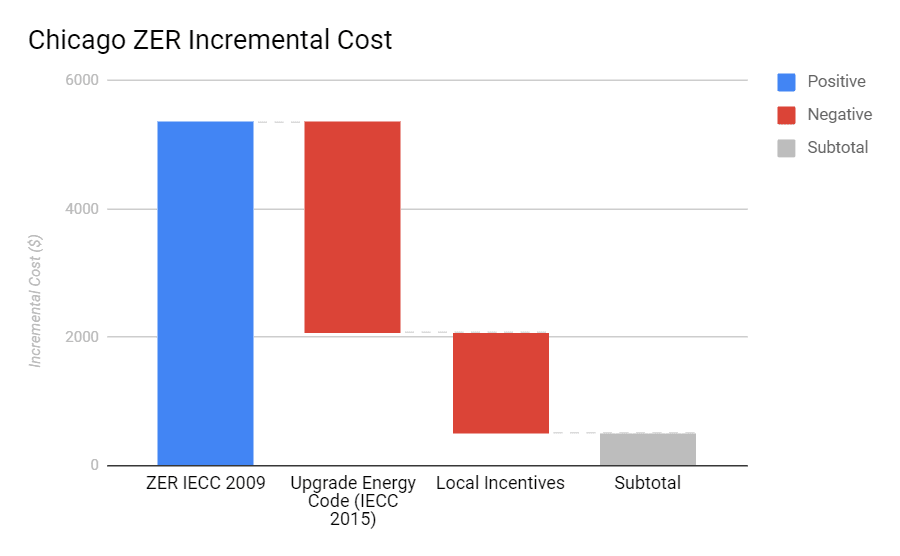
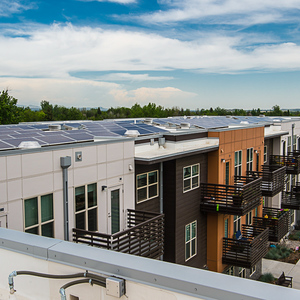
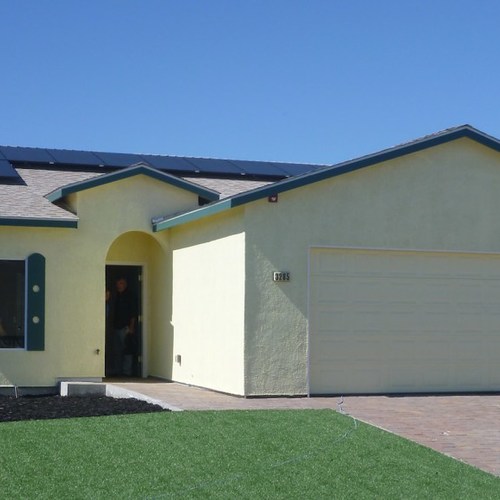
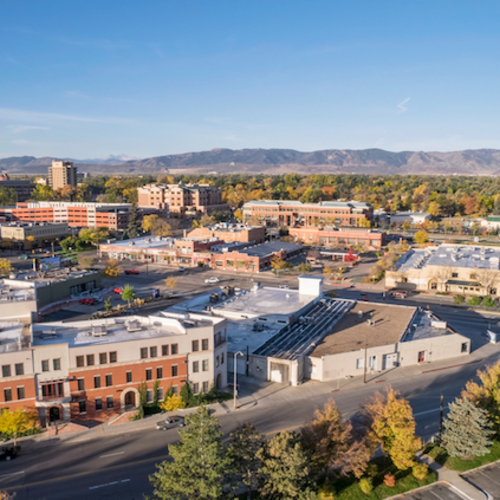
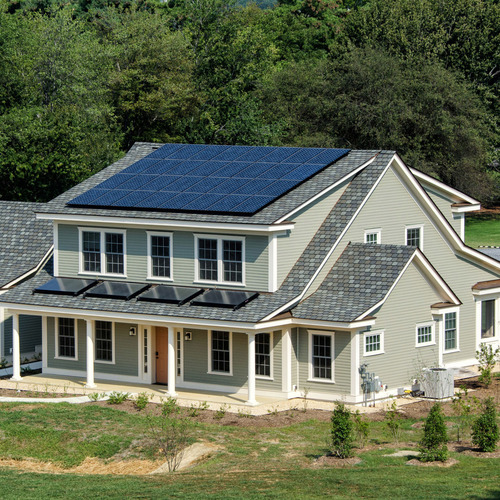






5 Comments
The recommendations have been promoted by GBA for many years - don't build your example house in Chicago with R38 attic insulation, 7ACH@50, an inefficient heat pump, ducts in unconditioned space, etc. No need for new labels like ZER.
> working with utilities to offer favorable interconnection and net-metering policies
Or about 2x better, work with utilities to implement more wind and utility scale solar. Look at the big picture and forget about homes being net zero energy.
I agree.
This concept of "net zero" is silly. I could build a log house that has no insulation in the walls or ceiling and you see daylight through all of joints of the logs. If I add 25 KW of solar power I could be "net zero" as well. I consume a whole lot of electrical power, and I generate a lot of electrical power. So what?
Not to mention that it's probably more feasible, economical, green, and carbonless to develop modern utility-scale renewable power instead of everyone adding 20 solar panels, electronics, and a bunch of disposable batteries (that really don't last very long) to their "net zero" houses.
T. Barker,
Of course you can imagine a hypothetical (and extremely expensive) log cabin with a $70,000 PV system. But guess what? No one builds that kind of net-zero house, because it's so expensive.
Instead, people build a house with an excellent thermal envelope and the smallest PV system that balances the home's annual electrical load -- because that approach is much cheaper than your suggested approach.
Yes, but it was an exaggerated example to make a point.
Who cares if a house is "net zero"? What I care is that my house is energy efficient and comfortable. Do I care if I personally generate the necessary electricity, or if a central utility generates the electricity? No. In fact, I would rather not have to generate the power myself. With renewable energy, especially wind power (but also solar), it can be more efficiently handled by a central utility.
The problem at this point in time is that almost all of the central utilities don't get it and/or aren't looking forward enough to design and build the proper distribution and management systems for modern renewable energy sources.
So I suppose in the short term a bunch of isolated pods of electrical power generation can act as a catalyst for change, but in my opinion where the power comes from is irrelevant.
Should we try to consume less power. Sure. Even so, do we need more power generated as the population continues to increase. Most likely. Should we assume that the best way to do that is for everyone to create their own isolated power generation systems? Probably not.
Does this include some sort of solar subsidy?
My net zero build, I could have done for $15k, but I went for the nicer Mitsubishi heat pump that added $10k. But then the solar install was an additional $30k.
Log in or create an account to post a comment.
Sign up Log in